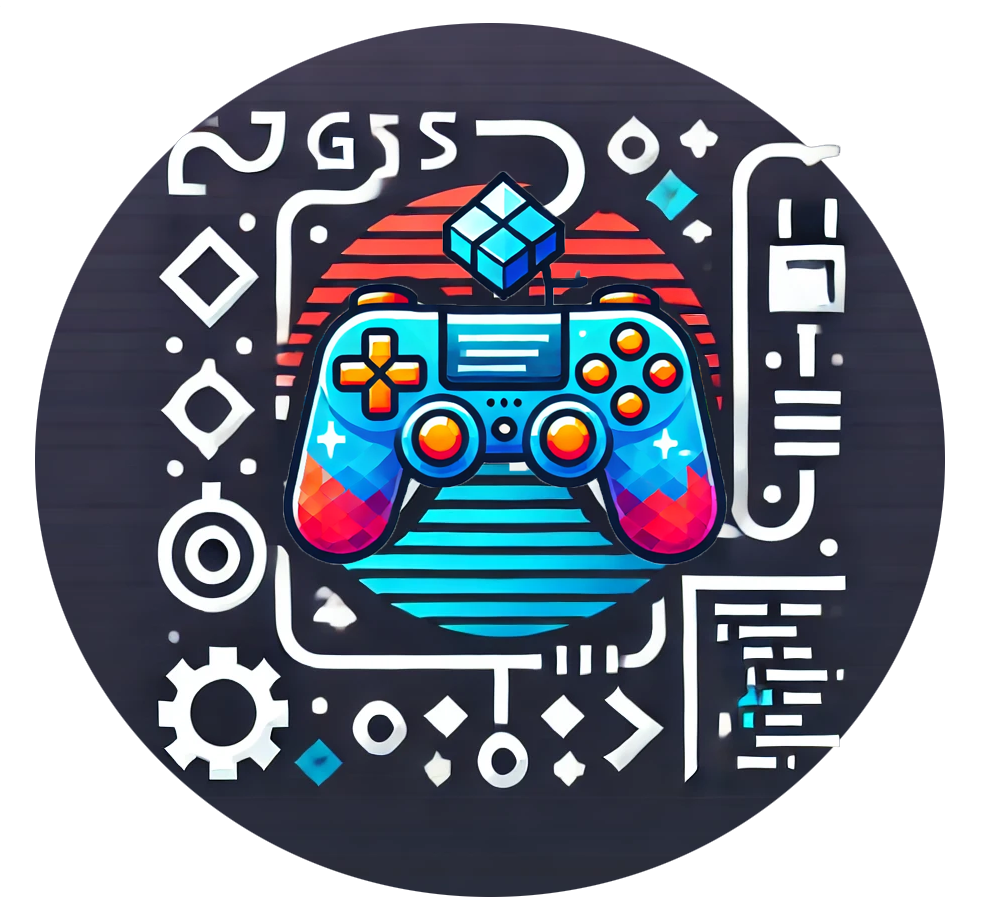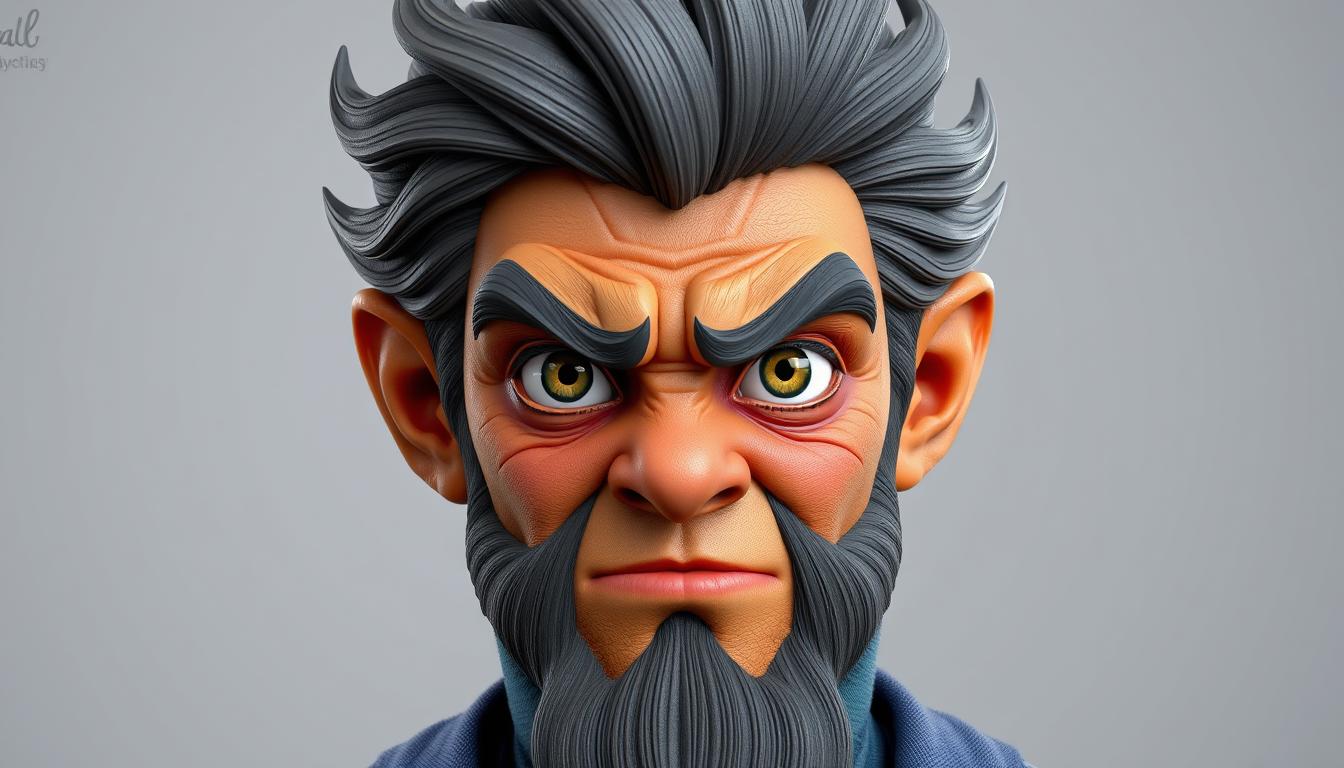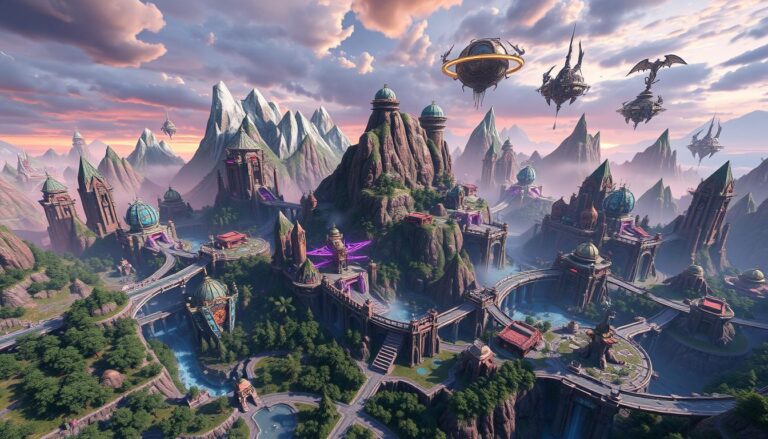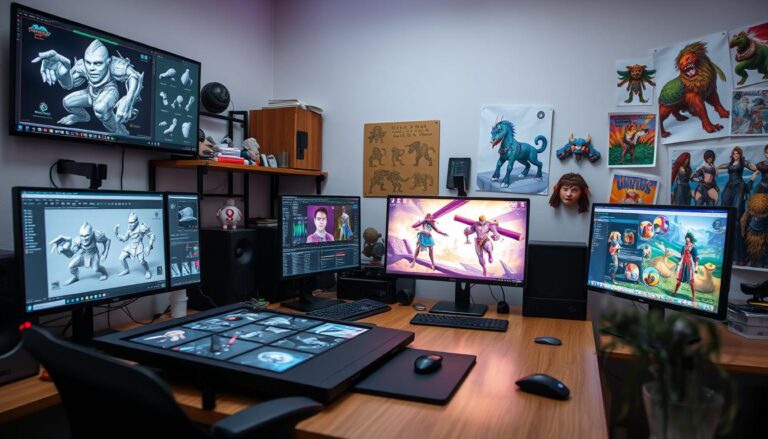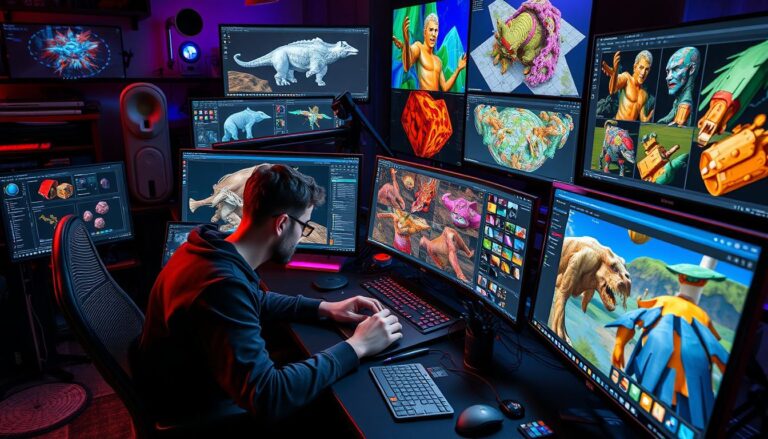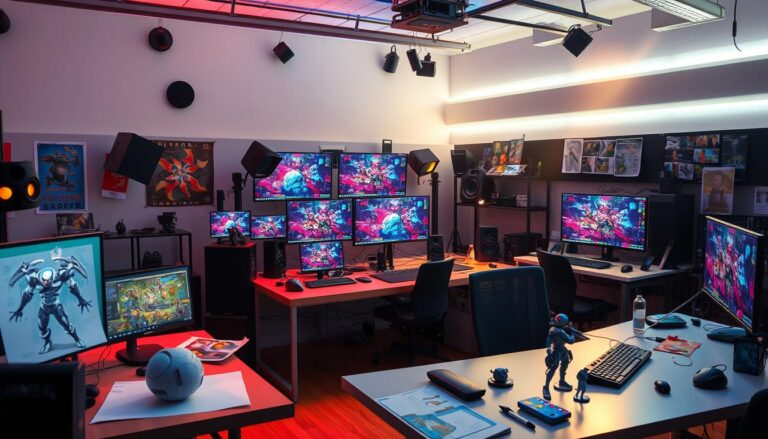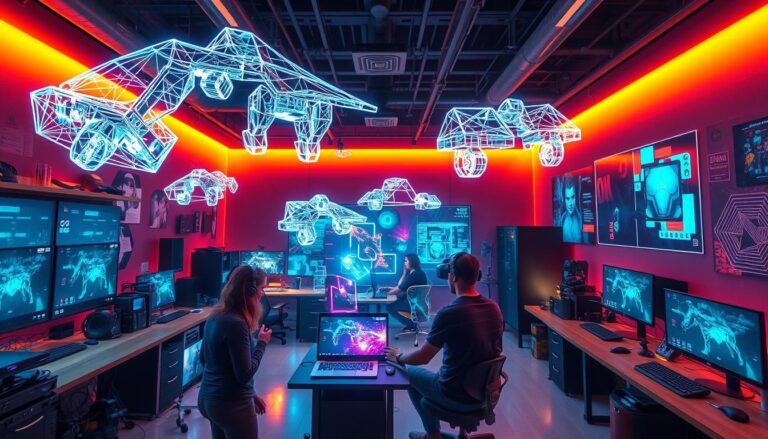How Can You Create Realistic 3D Characters and Models?
In the world of 3D game development, making realistic and engaging characters is key. Companies are willing to spend up to $80,000 for a single virtual avatar. This shows how much value is placed on character modeling.
The 3D character modeling process is complex. It includes stages like concept art, modeling, texturing, rigging, skinning, and animation.
Character modeling is crucial for game success. It helps create an immersive experience for players. The journey starts with concept art, which is a visual guide for the character design.
Then, character artists turn this concept into a 3D model. They mix technical skills with creativity.
3D characters offer more realism and flexibility than 2D ones. They can be viewed from any angle and easily changed. This gives creators more control and freedom.
Understanding the Foundations of 3D Character Creation
Making 3D characters that look real and engaging is complex. It needs a solid grasp of key principles and methods. At the heart of this is polygonal modeling, a common method in computer graphics and game making.
Basic Concepts of Polygonal Modeling
Polygonal modeling uses shapes like triangles and squares, called polygons. These shapes are linked by edges and vertices. Together, they create the detailed forms of 3D models.
Essential Technical Requirements
To make 3D characters come to life, you need the right tools and strong hardware. Character artists must know how to use software like Maya, 3ds Max, and ZBrush. They also need skills in texturing and rendering with tools like Substance Painter and Photoshop.
The Role of Character Artists
Character artists are key in creating 3D characters. They turn concept art into 3D models that grab your attention. They use their technical skills and creativity from start to finish. This ensures the characters look good and feel real in the game world.
| Technical Requirement | Description |
|---|---|
| High-Performance Computers | Strong computers, with fast CPUs and GPUs, are needed for 3D creation tasks. This includes fast rendering and smooth animation. |
| Specialized Software | Artists use software like Maya, 3ds Max, ZBrush, Substance Painter, and Photoshop. These tools help them make and improve their 3D models. |
| Artistic Talent | Artists need more than just tech skills. They must have a good design sense, know human anatomy, and bring their models to life with animation and stories. |
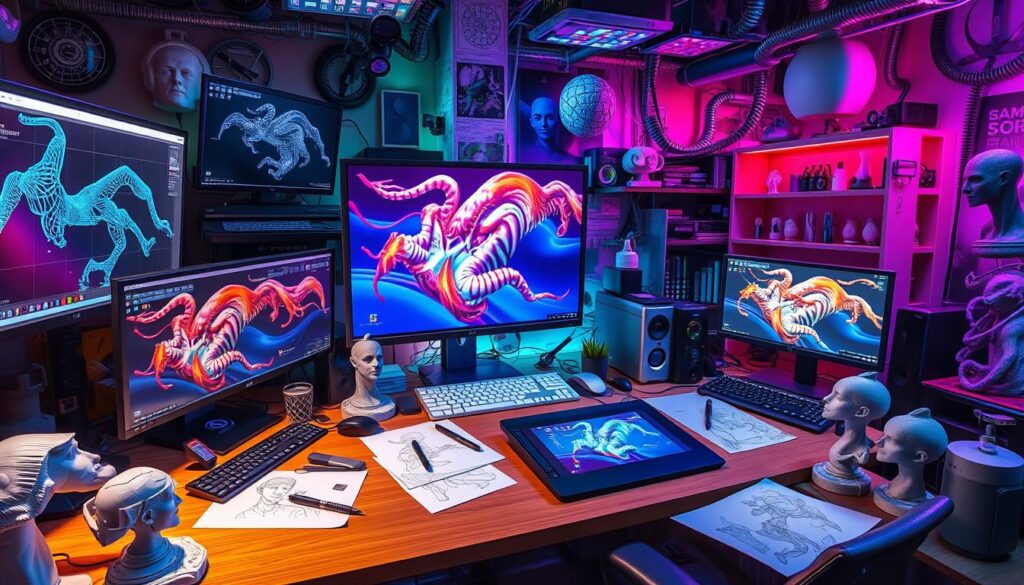
The Evolution from Concept Art to 3D Models
The journey from concept art to 3D game models is fascinating. It has changed the gaming world a lot over the years. At first, games were mostly 2D, with simple graphics and pixel details. But with 3D technology, the focus shifted to 3D models.
More 3D modelers were needed as 3D visuals became popular. Concept artists made the first sketches and detailed drawings. Then, 3D modelers turned these 2D ideas into 3D models. This needed teamwork to make sure the 3D models matched the original idea.
Game art has seen big changes, like in Doom in 1993 and Metal Gear Solid 2: Sons of Liberty in 2001. New tech like GPU and real-time ray tracing has made games look and feel more real. Games like Red Dead Redemption 2 (2018) and Cyberpunk 2077 (2020) show this progress.
Now, 2D and 3D artists are working together more. New tech like VR and AI is changing game art. This might make the lines between 2D and 3D art blur, changing the roles of artists in the Game Design, Virtual Reality, and Animation fields.
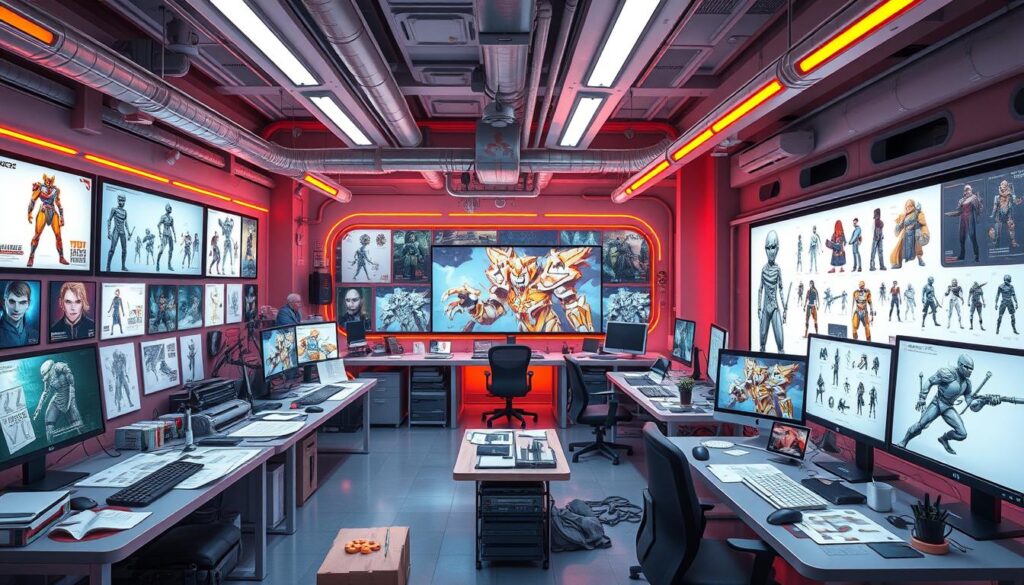
Essential Tools and Software for 3D Game Development
Creating amazing 3D characters and models is key in game development. You need the right tools and software. From top modeling programs to texturing and animation tools, the right software boosts your work’s quality and speed.
Industry-Standard Modeling Software
Maya, Poser, Zbrush, and Blender are top choices for 3D modeling. Maya is loved by Hollywood pros for its advanced features. Zbrush is great for digital sculpting and texturing, making models look real. Blender is a free, open-source option popular with new and indie game makers.
Texturing and Rendering Tools
To make 3D models look real, you need top texturing and rendering tools. Substance 3D Painter and Mari are favorites for their advanced texturing. They help create amazing surface details and materials.
Animation Software Solutions
Animation is key to making 3D characters come alive. Autodesk Maya and Blender have strong animation tools. They help create smooth and realistic character movements.
To use these 3D assets in games, you need a game engine. Unity, Unreal Engine, or CryEngine are top choices. They offer a full framework for making and playing 3D games, using advanced computer graphics tech.
Whether you’re an experienced game developer or new to 3D game development, knowing these tools and software is crucial. They help you create stunning 3D characters and environments for your games.
Character Modeling Workflow and Best Practices
Making realistic 3D characters for games is a detailed process. It starts with concepting, where artists sketch the character from different views. This helps create a unique look. Then, sculpting with tools like ZBrush adds depth and detail to the model.
The next step is retopology, making the model work better in game engines. This is done by reducing polygons without losing the character’s shape. After that, UV mapping is used to place textures on the character, which is key for a good look.
In the texturing phase, artists use skin scans and hand-painted textures to add color and emotion. Tools like Substance Painter help with this. Finally, rigging and animation make the character move and feel alive.
| Key Steps in Character Modeling Workflow | Description |
|---|---|
| Concepting | Establishing the character design from multiple angles |
| Sculpting | Adding depth and detail to the character model using sculpting software |
| Retopology | Optimizing the 3D model for game engines by reducing polygon count |
| UV Mapping | Mapping textures onto the character’s surface |
| Texturing | Applying color, detail, and emotion through texture creation and application |
| Rigging and Animation | Adding skeletal controls and animating the character for fluid movement |
By sticking to this detailed workflow and best practices, game makers can create amazing 3D characters. These characters will draw players in and make the game more fun.
Advanced Texturing and Material Creation
The art of 3D texturing is all about making models look real. It uses advanced techniques like relief and MIP mapping to add depth. Mastering UV mapping is key to applying these textures right, making visuals smooth and integrated.
Surface Detail and Material Properties
Realistic materials are key for great gaming and visuals. Physically-Based Rendering (PBR) materials are now the norm because they mimic light well. Techniques like subsurface scattering help make skin and textures look real. Also, texture atlasing and compression are important for keeping things looking good while running smoothly.
UV Mapping Techniques
UV mapping is a basic but crucial technique in 3D texturing. It lets artists map 2D textures onto 3D models. Being good at this ensures visuals are cohesive and seamless. Advanced UV mapping, like seam optimization and texture packing, helps textures fit well and look great.
Creating Realistic Skin and Hair
Creating lifelike characters needs a good grasp of human anatomy. Techniques like multi-channel face textures and displacement maps help make skin look real. For hair, tools like XgenCore help artists create detailed, realistic styles.
